Did you know that lacinato kale, also known as dinosaur kale or Cavolo Nero, is a powerhouse leafy green that is packed with nutrition? Not only is it delicious, but it is also incredibly easy to grow in your own garden. Whether you’re a beginner gardener or a seasoned pro, lacinato kale is a must-have addition to your vegetable patch.
In this article, I’ll share my top tips for successfully growing and enjoying lacinato kale. From planting to harvesting, I’ll guide you through each step of the process, ensuring that you have bountiful harvests of this nutritious green. Get ready to experience the satisfaction of homegrown lacinato kale and discover the endless culinary possibilities it offers. Let’s dive in!
Key Takeaways:
- Lacinato kale, also known as dinosaur kale or Cavolo Nero, is a highly nutritious leafy green.
- Growing lacinato kale is easy and suitable for both beginner and experienced gardeners.
- In this article, I will provide tips for planting, caring for, and harvesting lacinato kale.
- By growing lacinato kale, you can enjoy its delicious flavor and reap the numerous health benefits it offers.
- From salads to smoothies, there are endless ways to incorporate lacinato kale into your diet.
What is Lacinato Kale?
Lacinato kale, also known by several other names including dinosaur kale, Tuscan kale, Cavolo Nero, Toscana kale, Italian kale, and black kale, is an heirloom vegetable that originated in Italy. It is characterized by its long, narrow, blue-green leaves and unique form.
Lacinato kale plants can grow up to three feet tall and have a rosette of narrow leaves held atop straight stems. This variety of kale is less winter hardy compared to some other varieties, but it is tolerant of both hot and cold weather.
When to Plant Lacinato Kale
Planting lacinato kale is a breeze thanks to its long planting season. Whether you prefer direct seeding or transplanting, this versatile vegetable can be grown in spring, summer, or fall. Here’s a breakdown of the optimal planting times:
Spring Planting:
For spring planting, lacinato kale can be directly seeded or transplanted as early as two to three weeks before the last spring frost. This gives the plants ample time to establish before the warm season arrives.
Fall Planting:
If you’re planning a fall harvest, you can direct seed or transplant lacinato kale as late as six to eight weeks before the first fall frost. This ensures that the plants have enough time to mature before the colder temperatures set in.
Remember, it’s crucial to consider the ideal soil temperatures for successful seeding and transplanting. Lacinato kale thrives best when the soil temperatures range between 55°F (10°C) and 77°F (25°C). Keeping the soil within this temperature range sets the stage for healthy growth and development.
Whether you’re a fan of direct seeding or prefer the convenience of transplanting, lacinato kale offers flexibility in planting options. With the right timing and soil conditions, you’ll be rewarded with a bountiful harvest of nutritious and delicious lacinato kale.
How to Plant Lacinato Kale
Growing lacinato kale is a rewarding experience that starts with proper planting. To ensure successful growth and a bountiful harvest, follow these steps:
- Choose the Right Planting Site: Lacinato kale thrives in full sun, so select a planting site that receives at least eight to ten hours of sunlight per day. The more sunlight, the better the growth and flavor of your kale.
- Prepare Well-Draining Soil: Lacinato kale prefers well-draining soil rich in organic matter. Before planting, amend the bed with compost or aged manure to improve the soil’s fertility and drainage. This will provide a nutrient-rich environment for the kale plants to thrive.
- Consider Organic Fertilizer: If your soil is not particularly fertile, you can give your kale plants a boost by applying a balanced organic granular fertilizer before planting. This will provide them with the essential nutrients they need for healthy growth and development.
- Transplant or Directly Seed: Lacinato kale can be started indoors and transplanted or directly seeded in the garden. Transplanting allows for an earlier start, while direct seeding saves time and effort. Choose the method that works best for you.
Whether starting indoors or directly sowing in the garden, lacinato kale will reward you with its delicious flavor and numerous health benefits.
“To ensure successful growth and a bountiful harvest, follow these steps: choose the right planting site, prepare well-draining soil, consider organic fertilizer, and transplant or directly seed.”
Starting the Seeds Indoors
If you want to get a head start on growing lacinato kale, you can start the seeds indoors. This method allows for controlled conditions and ensures strong seedlings for transplanting into the garden.
To start the seeds indoors, you will need pots or cell packs and a high-quality potting mix. Fill each pot or cell pack with the potting mix, leaving a little space at the top.
Plant one to two lacinato kale seeds per cell, sowing them a quarter inch deep. Gently pat down the soil to ensure good seed-to-soil contact.
Next, place the containers in a sunny window or under a grow light. Lacinato kale requires at least 14 to 16 hours of sunlight each day for optimal growth. If you’re using a grow light, position it about 6 inches above the seedlings to provide adequate light intensity.
Keep the soil lightly moist as the seeds germinate and the seedlings grow. Avoid overwatering, as this can lead to root rot. A spray bottle can be useful for watering delicate seedlings.
Once the seedlings are a couple of inches tall and have developed their first set of true leaves, it’s time to start feeding them. Dilute a liquid organic fertilizer according to the package instructions and gently water the seedlings with the solution. This will provide them with the necessary nutrients for healthy growth.
Gradually expose the seedlings to the outdoor conditions to harden them off before transplanting them into the garden. Start by placing them outside for a few hours each day, gradually increasing the time over the course of a week. This will help the seedlings acclimate to the temperature, humidity, and wind outdoors.
When the weather and soil conditions are optimal, usually after the last spring frost, the hardened-off seedlings can be transplanted into the garden. Dig a hole slightly larger than the root ball of each seedling and gently place it into the hole. Firmly press the soil around the stem to ensure good contact.
By starting the seeds indoors, you can get a head start on growing lacinato kale and enjoy an abundant harvest of this nutritious leafy green.
Direct Seeding Lacinato Kale
Direct seeding is a simple and efficient way to grow lacinato kale, whether you want mature plants or delicious baby leaves. Here are some steps to follow:
For Mature Plants:
- Space the seeds about four inches apart in the garden bed.
- Keep the soil evenly moist until the seeds germinate and the seedlings are established.
- Once the seedlings are a couple of inches tall, thin them to 12 to 18 inches apart to give them adequate space to grow.
For Baby Leaves:
- Seed the kale densely, placing the seeds around two inches apart.
- Keep the soil evenly moist until the seeds germinate and the seedlings are established.
- As the leaves start to grow, thin them out gradually to ensure proper spacing and support healthy growth.
Thinning is an essential step when direct seeding lacinato kale. It allows the plants to receive sufficient sunlight, nutrients, and water, promoting vigorous growth and preventing overcrowding.
Remember to keep the soil consistently moist during the germination and establishment stages for successful direct seeding. Maintain regular watering to ensure optimal growth, and monitor the plants for any signs of stress or diseases.
| Benefits of Direct Seeding Lacinato Kale |
|---|
| 1. Cost-effective: Direct seeding saves money on purchasing seedlings or transplants. |
| 2. Efficient use of space: Direct seeding allows you to utilize your garden space effectively by optimizing the placement of mature plants and maximizing the production of baby leaves. |
| 3. Versatile harvesting options: Direct seeding enables you to grow kale plants for their mature leaves or cultivate them for baby greens, allowing flexibility in your culinary pursuits. |
| 4. Better root development: When directly seeded, lacinato kale develops strong root systems, which helps anchor the plants and enhances their ability to uptake water and nutrients from the soil. |
By following these direct seeding techniques, you can enjoy a bountiful harvest of lacinato kale while fully utilizing the potential of your garden space. Whether you prefer mature leaves for your hearty dishes or tender baby leaves for your salads, direct seeding offers a flexible and rewarding approach to growing this nutritious leafy green.
Growing Lacinato Kale
Lacinato kale, also known as dinosaur kale or Tuscan kale, is not only a delicious leafy green but also an easy-to-grow and low-maintenance vegetable. With a few simple care requirements, you can enjoy a bountiful harvest of lacinato kale right in your own backyard or even in containers for urban gardening.
To ensure successful growth, lacinato kale thrives with regular moisture. This means watering the plants deeply once a week if there has been no rain. However, to reduce the need for frequent irrigation, you can mulch the soil around the plants with shredded leaves or straw. This helps retain moisture, promoting healthy growth and conserving water.
In addition to regular watering, lacinato kale benefits from the use of organic fertilizer during the growing season. If you didn’t add any fertilizer at planting time, it’s recommended to provide the plants with a liquid organic fertilizer every few weeks. This ensures that the plants receive essential nutrients for robust growth and abundant harvests of flavorful leaves.
When it comes to growing lacinato kale, you have the flexibility to choose between traditional garden beds or containers. If you opt for containers, make sure they have drainage holes to prevent waterlogging. With their compact size, lacinato kale plants can thrive in pots or even raised beds on balconies or patios, making it a suitable option for urban or limited space gardening.
Lacinato kale’s easy-to-grow nature and low-maintenance requirements make it a great choice for beginner gardeners and anyone looking to add a nutrient-rich and versatile vegetable to their homegrown harvests.
| Key Characteristics | Care Tips |
|---|---|
| Easy to grow | – Regular moisture through deep watering or mulching – Use organic fertilizer during the growing season |
| Low-maintenance | – Suitable for containers or traditional garden beds – Ideal for urban gardening |
By following these care tips, you can enjoy a thriving lacinato kale patch in your garden or on your balcony. Let the nutritious and flavorful leaves of lacinato kale enhance your culinary creations while adding beauty to your outdoor space.
Common Kale Pests
Lacinato kale, like other varieties of kale, can be prone to pests that can damage the leaves and hinder plant growth. Two common pests that affect lacinato kale are slugs and imported cabbage worms. Fortunately, there are effective methods to control these pests and protect your kale crop.
Slugs
Slugs are voracious eaters that can quickly devour the leaves of your lacinato kale. To control slugs, I recommend a combination of manual removal and the use of diatomaceous earth.
First, inspect your kale plants regularly and remove any slugs you find by hand. This can be done in the early morning or evening when slugs are most active. It’s important to dispose of the slugs away from your garden to prevent them from returning.
Secondly, diatomaceous earth can be sprinkled on the soil surface around your kale plants. This natural substance is made from the fossilized remains of tiny aquatic organisms and acts as a barrier that slugs find difficult to cross. As slugs come into contact with the diatomaceous earth, it dehydrates them and effectively controls their population.
Imported Cabbage Worms
Imported cabbage worms are caterpillars that can wreak havoc on your lacinato kale by devouring the leaves. To control these pests and protect your crop, there are several methods you can try.
First, inspect your kale plants regularly for eggs and caterpillars. The eggs are usually laid on the underside of the leaves and are best removed by hand. If you spot any caterpillars, simply pick them off the plants and dispose of them away from your garden.
Using row covers is another effective method to prevent imported cabbage worms from reaching your kale plants. These covers create a physical barrier that keeps the pests away while still allowing sunlight, air, and water to reach the plants. Simply place the row cover over your kale plants and secure it tightly around the edges to prevent any gaps.
Alternatively, you can use organic products containing Bacillus thuringiensis (Bt) or spinosad to control imported cabbage worms. These products are derived from naturally occurring bacteria and can be sprayed onto the leaves of your kale plants. They specifically target the cabbage worms while being safe for beneficial insects.
By implementing these pest control measures, you can protect the leaves of your lacinato kale and ensure a healthy harvest.
When to Harvest Lacinato Kale
Harvesting lacinato kale at the perfect time ensures the best flavor and texture. Whether you’re looking for tender baby greens or mature leaves, timing is key to a successful harvest.
For lacinato kale’s delicate baby greens, wait until the leaves are around two to three inches in length. This typically occurs about 25-30 days after sowing the seeds. These young leaves are perfect for adding a nutritious punch to salads and sandwiches. Simply pluck them from the plant to enjoy their vibrant freshness.
When it comes to harvesting mature lacinato kale leaves, patience is rewarded. Allow the leaves to grow to about a foot long, which usually happens around two months after planting. Aim to pick the outer or lowermost leaves of the plant, allowing the center leaves to continue growing and sustaining the plant’s vitality. To achieve a clean cut, gently break off the mature leaves or use herb snips.
| Harvest Stage | Leaf Length | Days After Sowing | Ideal Use |
|---|---|---|---|
| Baby Greens | 2-3 inches | 25-30 days | Salads, Sandwiches |
| Mature Leaves | About a foot long | Around 2 months | Cooking, Soups, Stir-fries |
Types of Lacinato Kale
There are several varieties of lacinato kale available, each with its own unique characteristics and visual appeal. Whether you’re a seasoned gardener or a beginner, these different types of lacinato kale can add variety and excitement to your garden.
Lacinato (Dinosaur) Kale
The standard ‘Lacinato’ variety of kale is also known as dinosaur kale due to its wrinkled and textured leaves resembling dinosaur skin. It has a deep blue-green color and a slightly sweeter flavor than other kale varieties. This heirloom vegetable is a popular choice among gardeners and is perfect for both cooking and salads.
Black Magic Kale
Black Magic kale is a visually stunning variety with leaves that are dark green to black in color. This variety has a milder flavor compared to the standard lacinato kale and can be used as a beautiful garnish or in salads to add a touch of elegance and contrast.
Dazzling Blue Kale
Dazzling Blue kale is a vibrant variety that features blue-green leaves with purple veins. This visually striking kale adds a pop of color to any garden or dish. Its tender leaves have a slightly sweeter taste, making it a great choice for salads or sautéing.
Rainbow Lacinato Kale
Rainbow Lacinato kale is a colorful and eye-catching variety that showcases leaves in shades of green, purple, and reddish-blues. This kale not only adds visual interest to your garden but also adds a burst of flavor to your meals. The leaves of the rainbow lacinato kale are tender and have a mild, slightly nutty taste.
Each of these varieties of lacinato kale offer unique characteristics that can enhance your gardening experience and elevate your culinary creations. Experiment with different types of lacinato kale to discover your favorite and enjoy the beauty and nutritional benefits they provide.
Conclusion
Lacinato kale, also known as dinosaur kale or Tuscan kale, is a versatile and nutrient-rich vegetable that can elevate your culinary experience. By following the tips provided in this article, you can successfully grow your own lacinato kale and enjoy the satisfaction of harvesting and preparing your homegrown greens. Whether it’s adding a handful to your morning smoothie, tossing it in a refreshing salad, or crisping it up for kale chips, the possibilities are endless.
Not only does lacinato kale offer a variety of flavors and textures to your dishes, but it also provides numerous health benefits. Packed with vitamins A, C, and K, as well as minerals like calcium and potassium, this leafy green can support your overall well-being. Its high fiber content promotes a healthy digestive system, while powerful antioxidants help protect against inflammation and oxidative stress.
With its easy cultivation and tolerance for various growing conditions, lacinato kale is an excellent addition to any garden, large or small. Whether you have a backyard plot, a balcony container garden, or even just a sunny windowsill, you can cultivate your own lacinato kale and experience the joys of homegrown produce. So, why not join the green revolution and start growing and enjoying this nutritious leafy green today?

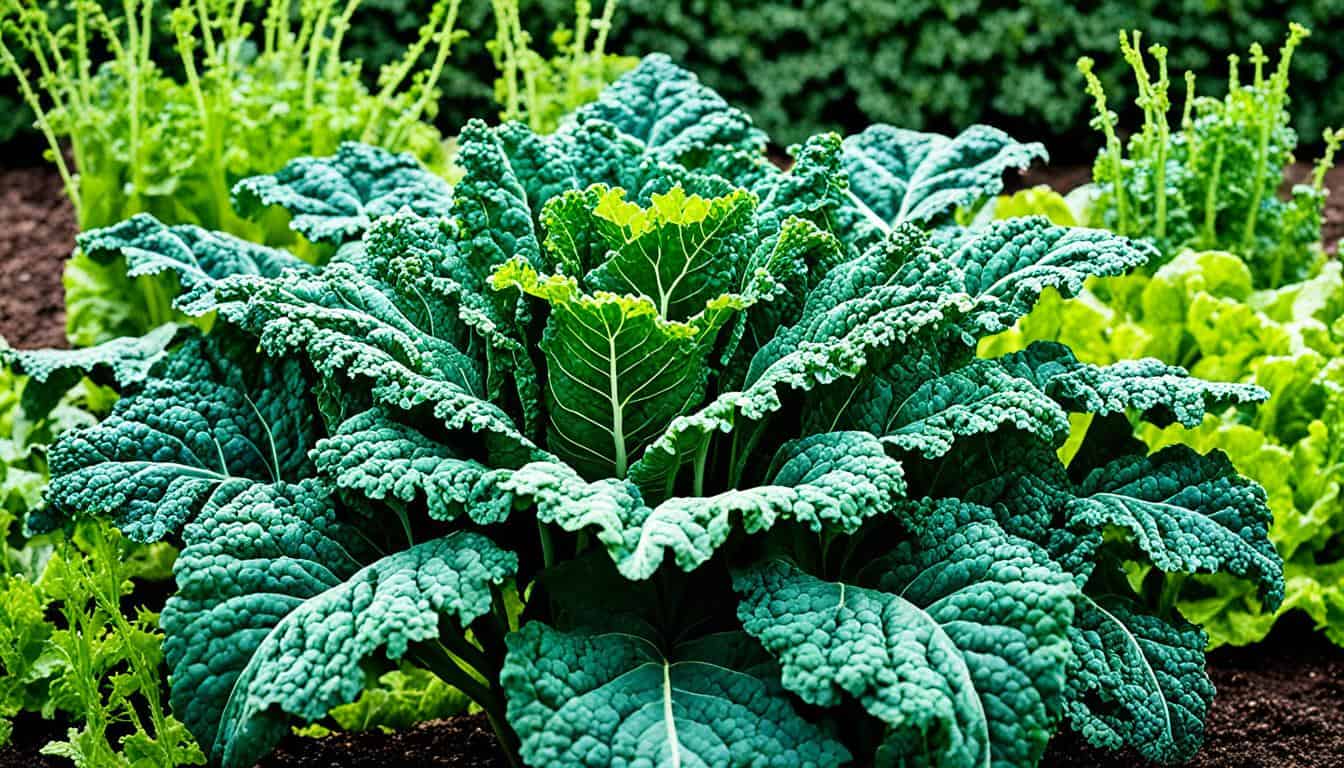
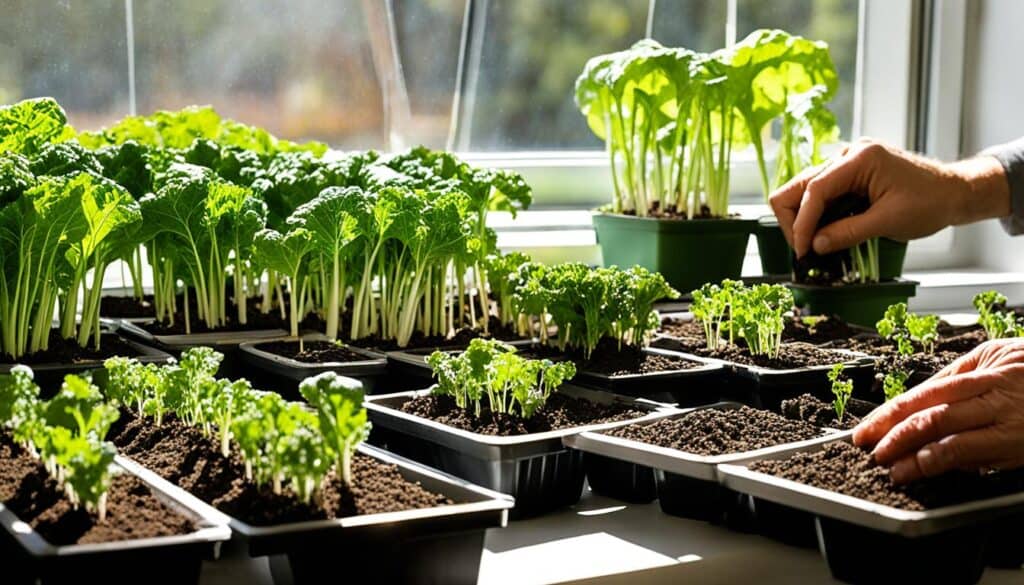

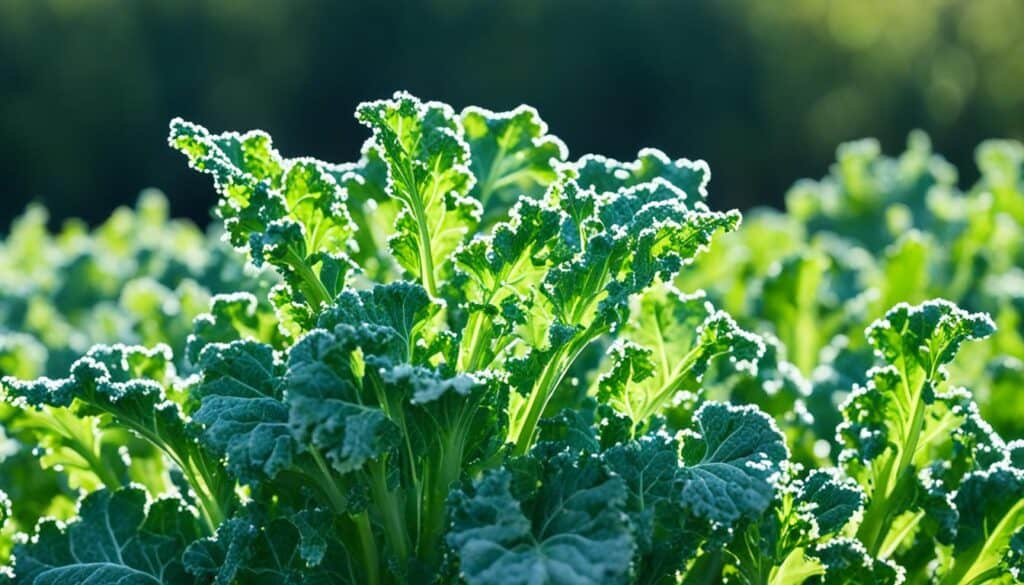
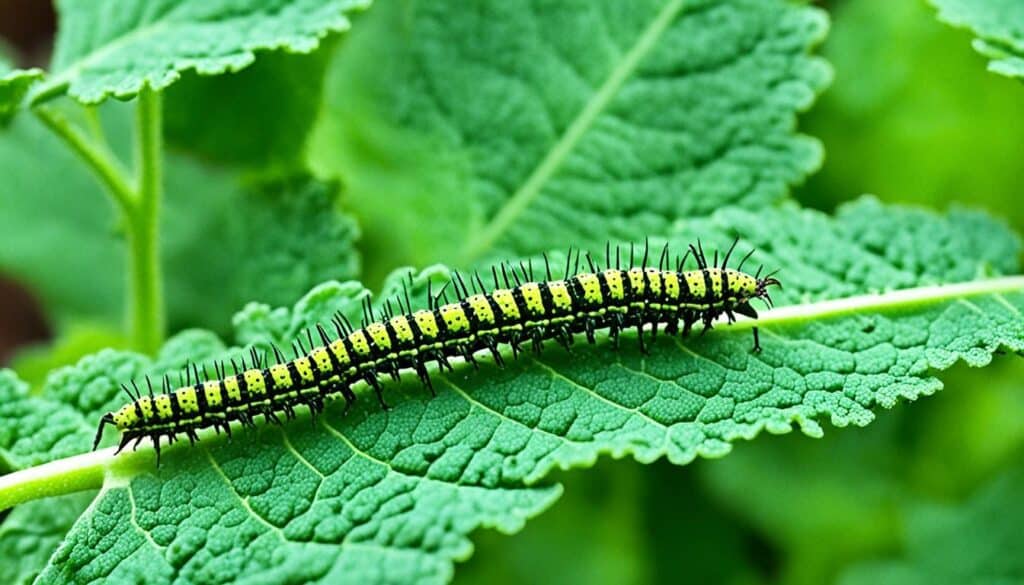
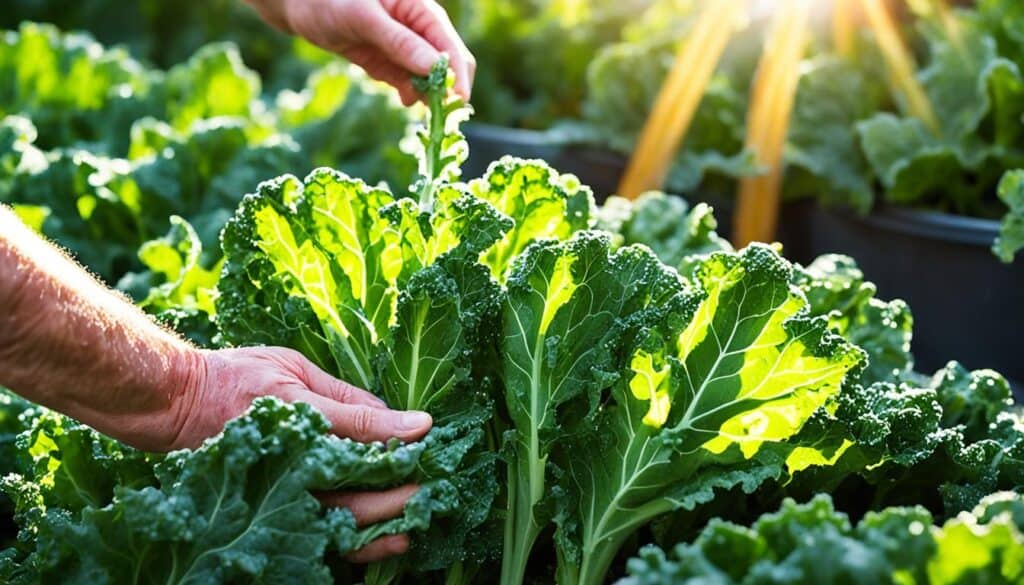



Leave a Reply